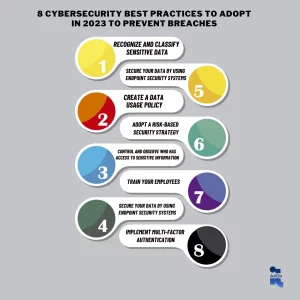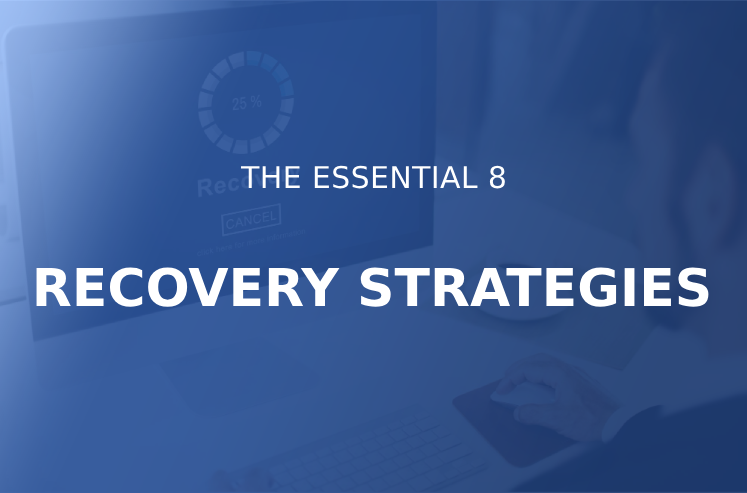Everyone who works for a firm contributes to defending the business against cyber-attacks, regardless of whether they use computers or are in charge of keeping things secure. The actions they take—or fail to take—can have a significant impact on whether the business is attacked or remains secure. Attacks on businesses can damage their reputation and cost them a lot of money. Therefore, everyone must contribute to maintaining the company’s security.
Cybercrime is a rapidly growing subset of crime that affects businesses across a variety of industries. It’s crucial to keep up with the latest cybersecurity trends and best practices to avoid having your company’s name mentioned in the media as a result of a security breach.
In today’s digital age, cyber threats are a serious issue, so it’s essential to have a solid cybersecurity solution to safeguard yourself. Cyber security services evaluation aids companies in assessing their online security, identifying vulnerabilities and dangers, and developing a comprehensive security strategy. Information security and cyberattack prevention are also aided.
Additionally, businesses must adhere to cyber security protocols to protect their data and client information from online attacks. Employee education on cybersecurity risk is crucial because it enables them to identify and defend against online threats. Experts in managed security services help firms against vulnerable targeted cyberattacks.
What Are the Causes Behind Data Breaches?
An unauthorized access, exposure, loss, or theft of protected or secret data is a data breach. Although there are many ways that data breaches might happen, the following are frequently the main reasons:

1) Hacked by Criminals
This is the most frequent reason for data breaches, and it includes hackers breaking into a company’s computer systems using malicious software like malware or ransomware. Attackers can steal sensitive data, such as personally identifiable information (PII) about customers, financial information, or important trade secrets for the cybersecurity industry, after gaining illegal access.
2) Human Error
An additional frequent reason for data breaches is human mistake. Employees may lose laptops or USB drives carrying sensitive data, misconfigured network security settings, or click on harmful links in phishing emails.
3) System Errors
Cybersecurity breaches may also be caused by system errors. This may occur as a result of hardware or software flaws or mistakes with data processing techniques.
4) Physical Theft
Physical theft of data-carrying equipment, including laptops, hard disks, or USB drives, can occasionally result in data breaches.
The top three reasons for data breaches, according to the 2023 Verizon Data Breach Investigations Report, were:
Hack By Criminals: 45% of breaches
Human Error: 22% of breaches
System Errors: 14% of breaches
The report also found that the average cost of a data breach in 2023 was USD 4.24 million.
Here are some guidelines to secure your data against breaches:
- Use secure passwords, and switch them out frequently.
- Be cautious when sharing information online.
- Avoid phishing emails and other fraudulent schemes by being vigilant.
- Update your program frequently.
- Maintain regular data backups.
These procedures can improve your cybersecurity advice and lessen the likelihood of a data leak.
Who Has Access to Your Data and Where Does It Go?
You must first be aware of something’s existence in order to successfully safeguard it. Understanding your data and its level of sensitivity is crucial for this reason.
Knowing exactly how your data is being used, who has access to it, and where it is being shared would be ideal. Spend some time gathering data from all sources, including various hardware and web services, and organizing it according to its sensitivity and the people who can access it.
As soon as you have this knowledge, you can create and put best practices, protocols, and policies in place to protect your data.
8 Cybersecurity Best Practices to Adopt in 2023 to Prevent Breaches

1) Recognize and Classify Sensitive Data
To properly protect your data, it’s imperative to have a comprehensive understanding of the many sorts of information you have. Start by letting your security team scan the locations where your data is stored and produce reports on their findings. The information can then be divided into several groups according to its worth to your company.
As data changes or is shared, keep the category current. It’s crucial to establish rules that stop users from inadvertently changing the categorisation of the data. The data classification should only be able to be upgraded or downgraded by authorized users.
2) Create a Data Usage Policy
It is crucial to develop a strategy that specifies how data should be accessed, who can access it based on its categorization, and rules for appropriate data usage. Simply classifying data is not sufficient. Control who has access to what locations and turn off access when it’s no longer required.
Don’t forget to impose severe penalties for any policy infractions.
3) Control and Observe Who Has Access to Sensitive Information
It’s crucial to grant authorized users the proper access privileges. Adhere to the least privilege principles of cybersecurity, which includes giving people only the access they need to do their responsibilities. This guarantees that the appropriate individuals have access to the data on cybersecurity trends.
Here are a few essential permission levels to consider:
- A) Full Control: Users have complete data ownership, allowing them to store, access, modify, delete, and manage permissions.
- B) Modify: Users can access, modify, and delete data.
- C) Access: Users can access the data without making changes or deleting it.
- D) Access and Modify: Users can access and make changes to the data but cannot delete it.
Controlling and monitoring access this way can reduce the cyber supply chain risk management of unauthorized individuals accessing sensitive data.
4) Secure Your Data by Using Endpoint Security Systems
Threats frequently target the endpoints in your network, such as servers and workstations. To lessen the danger of data breaches in the cyber supply chain, a solid endpoint security infrastructure must be established. You can follow the instructions listed below:
- A) Install antivirus program: Ensure that all of your workstations and servers are running antivirus software. Scan your systems frequently for malware, such as ransomware, and delete it.
- B) Apply Antispyware: Malicious software called spyware gathers personal data without your awareness. To stop and eliminate these threats, install anti spyware programs.
- C) Make Use of Pop-Up Blockers: Pop-ups can be inconvenient and possibly dangerous. To stop undesirable apps from running on your PC, use pop-up blockers.
- D) Install firewalls: Your data is protected by firewalls from cybercriminals access. Install a firewall on your network, and for additional security, think about employing internal firewalls.
By putting these procedures in place, you may improve the security of your endpoints and better safeguard your sensitive data.
5) Record Your Cybersecurity Policies
Relying on verbal exchanges or educated guesses when it comes to cyber security services is insufficient. Spend some time thoroughly documenting your cybersecurity procedures, guidelines, and processes. This paperwork will secure the transfer of specialized information to your staff and stakeholders, promote online training, and give checklists.
6) Adopt a Risk-Based Security Strategy
Think about the potential hazards your business may face and how they might affect employee and consumer data. carry out extensive risk analyses to:
- Identify your assets’ location and type.
- Analyze the state of your cybersecurity risk at the moment.
- Create a security plan that works.
Adopting a cyber supply chain risk management strategy assures compliance with laws governing cybersecurity and shields your company from any data leaks and security breaches.
7) Train Your Employees
All staff should receive training on your company’s cybersecurity best practices and rules. Hold frequent training sessions to update them on any new guidelines and business changes. To demonstrate the significance of cybersecurity for business, use real-world examples of cybersecurity breaches. Employee input on your present security system should be encouraged.
8) Implement Multi-Factor Authentication
Data security is improved with multi-factor authentication (MFA), which adds an additional layer of security when logging into an account. You must still give extra verification, such as a security token, fingerprint scan, voice recognition, or cell phone confirmation, even if someone already knows your password. This considerably increases the challenge for hackers to access your accounts without authorization.
Key Takeaways
Best practices for cybersecurity go beyond the previous steps. They consist of creating regular data backups, encrypting data in transit and at rest, and encouraging secure password usage.
It’s crucial to understand that cybersecurity for a company does not involve completely eradicating risks, as it is unachievable. It is equally unwise to ignore it. You may greatly reduce the dangers involved and secure your data by using the appropriate security measures.
Protecting your company from data breaches requires putting cybersecurity best practices into effect. The key to improving security is to educate staff, establish strict policies, monitor access, install endpoint security, and carry out risk assessments.
Are you looking for a cybersecurity solution for your company? Risk assessments, security training, data protection, and incident response planning are just a few of the specialized services that ITAdOn offers to help you reduce risks and protect your company.






